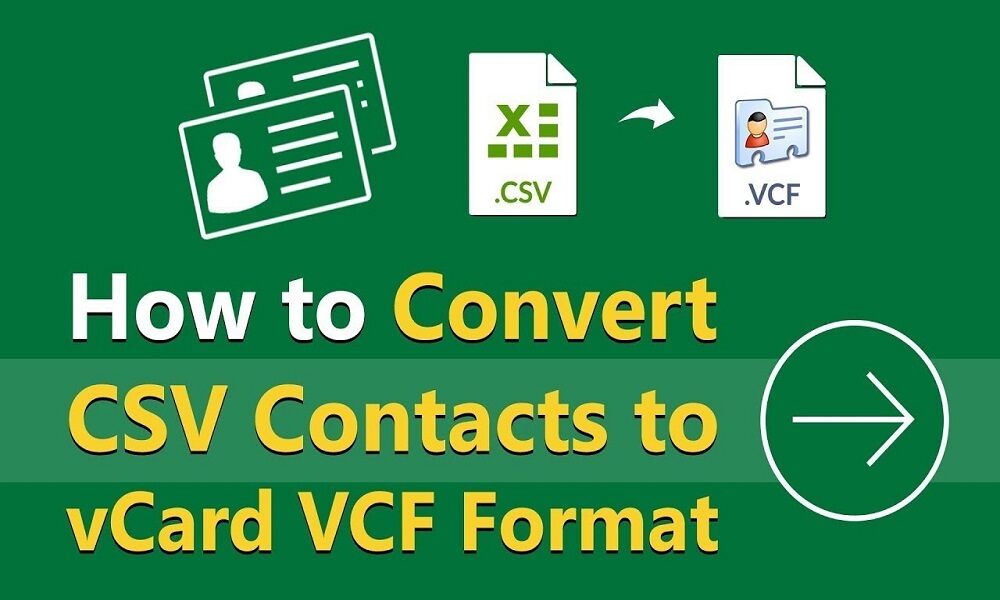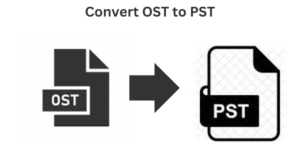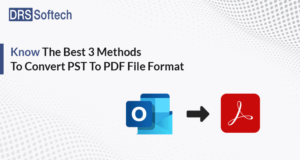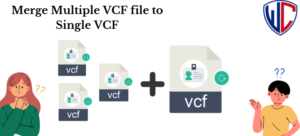In an ultra-modern interconnected international, the ability to seamlessly manage and percentage contact statistics is paramount. Contact records are available in various formats, and one of the most common formats is CSV (Comma-Separated Values). While CSV is broadly used and supported, it is no longer the most convenient layout for storing and sharing contact information. This is where VCF (vCard) files come into play. In this blog, we will discover the transformation of contact data from CSV to VCF formats, the motives behind it, and the methods to be used to perform this conversion.
What is a CSV file format?
CSV, which stands for Comma-Separated Values, is a simple text record layout used to save statistics in a tabular form. In a CSV record, records are prepared into rows and columns, with every row representing a document and each column representing a fact. Values within a CSV file are separated by using commas or other delimiters, making it easy to import and export statistics into spreadsheet software like Microsoft Excel or Google Sheets.
What is a VCF file?
VCF, or vCard, is a report layout generally used for storing contact statistics, along with names, phone numbers, email addresses, and more. VCF files are versatile and like-minded with a huge range of applications, devices, and email clients. They can keep both individual and institutional contacts, making it an ideal choice for sharing contact information across structures.
Reasons to Convert CSV to VCF Format
There are several compelling motives to convert contact data from CSV to VCF layout:
- Compatibility: VCF documents are extensively supported throughout numerous structures, making them a set-up choice for sharing touch statistics. Converting CSV to VCF ensures your contacts are accessible on precise gadgets and packages.
- Contact Grouping: VCF files allow you to group contacts into corporations and classes, facilitating less difficult control and retrieval of particular contacts.
- Expanded Data Fields: VCF documents are a useful resource for a broader variety of contact information fields, including photographs, addresses, URLs, and more. This allows you to shop for richer and more specific touch facts.
- Interoperability: VCF documents are recognized by using electronic mail customers, smart phones, and phone control software, ensuring seamless integration with your modern-day equipment.
Manual Steps to Convert CSV Contacts to VCF
Converting CSV contacts to VCF manually is feasible but may be a time-consuming and error-prone method. Here are the steps concerned:
- Open the CSV File: Use a spreadsheet utility like Microsoft Excel to open the CSV report.
- Organize the Data: Ensure that your CSV file has columns for all of the essential touch data, along with calls, Smartphones, a huge variety, email addresses, and so forth.
- Export as VCF: Manually duplicate and paste every touch’s statistics right into a VCF record, following the VCF file shape.
- Save the VCF File: Save the VCF file with the.Vcf extension.
Limitations of the Manual Solution
While manually converting CSV to VCF is feasible, it comes with some good-sized limitations:
- Time-Consuming: The guide may be time-ingesting, specifically if you have a huge variety of contacts.
- Error-Prone: Copy-pasting data increases the probability of mistakes and omissions in your touch records.
- Limited Data Fields: Manually changing might also restrict you from taking full advantage of VCF’s extended information fields.
Expert Solution to Export CSV to VCF Format
The Softaken CSV to vCard Converter is a flexible and consumer-friendly software solution designed to easily convert CSV (Comma-Separated Values) documents to VCF (vCard) format. This expert tool simplifies the method of transferring touch information, ensuring compatibility across numerous platforms and devices. With its intuitive interface and efficient conversion algorithms, customers can fast and accurately convert contact records, along with names, phone numbers, electronic mail addresses, and more. The software offers customization alternatives, batch processing, and compatibility with popular working structures, making it a pass-to desire for individuals and companies searching for a continuing and reliable CSV to VCF conversion answer.
In just five simple steps:
- Launch the CSV to VCF Converter.
- Select the CSV file you want to convert.
- Map CSV fields to VCF attributes.
- Choose the destination folder for VCF files.
- Click “Convert” to seamlessly transform your CSV data into VCF format.
Conclusion
Converting contact statistics from CSV to VCF format is a practical and valuable procedure. VCF files provide compatibility, extended statistics fields, and simplicity of use that make them an extraordinary choice for handling and sharing touch information. While guide conversion is possible, it could be time-consuming and mistake-prone, in particular for huge datasets. The Softaken CSV to VCF Converter gives an expert solution that streamlines the system and ensures accurate and inexperienced conversion, making it the preferred desire for people and agencies trying to enhance their touch management competencies.






More Stories
How do I fix the Outlook OST is it not an Outlook data file? PST error?
Know The Best 3 Methods To Convert PST To PDF File Format
Qualified Tactics to Unite/Combine/Merge VCF (vCard) Contacts in One File